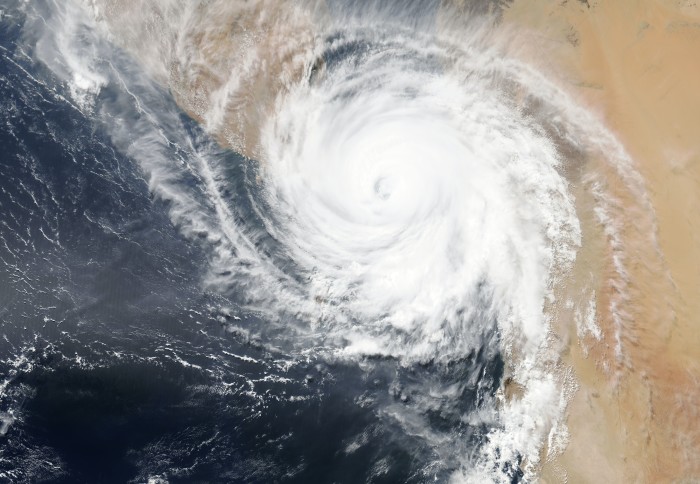Solar geoengineering not a 'sensible rescue plan', say scientists

New study indicates that reflecting solar energy back to space in an attempt to reduce global warming could cause more problems than it solves.
Increasing emissions of greenhouse gases into the atmosphere, resulting in an accelerating rise in atmospheric temperature, are creating a hugely significant challenge to people and the planet.
Scientists are looking into the plausibility of ideas that aim to limit the effects of climate change, while carbon emissions from humans burning fossil fuels continue to over-insulate the planet. 'Solar geoengineering' proposes to reflect incoming sunlight back into space by deliberately releasing reflective particles into the upper atmosphere where they block the sun's warming rays.
Providing deeper insight
New research funded by the Swiss National Science Foundation, and led by Dr Abdul Malik, formerly a researcher at the Grantham Institute – Climate Change and the Environment, with colleagues at Imperial College London and Zhejiang University in China, offers the most detailed analysis yet and contributes to the ongoing Geoengineering Model Intercomparison Project (GeoMIP), which investigates the likely effects of geoengineering on the planet.

The authors of the study, published in Atmospheric Chemistry and Physics, simulated three versions of the Earth’s climate using high-powered computers running the UK Met Office’s climate model, called HadCM3L. These three experimental Earths explored the consequences of increased atmospheric carbon dioxide concentrations with and without solar geoengineering, to see what would happen over a thousand years. These experiments are much longer than previous such studies and provide deeper insight into the potential implications of solar geoengineering.
The first experiment simulated the climate before the time of the Industrial Revolution (approximately 1750-1850), before humans were burning large amounts of fossil fuels and increasing the amount of carbon dioxide in the atmosphere, this is known as the ‘pre-Industrial’ period. The second envisaged an atmosphere loaded with four times more carbon dioxide than in the pre-Industrial period: This simulated a scenario where no actions were taken to cut today’s carbon emissions. The third experiment simulated a world with four times the pre-Industrial level of carbon dioxide as before, but with sunlight reduced by 4% at the top of the Earth's atmosphere, which simulated a climate that had been altered by solar geoengineering.
What does solar geoengineering mean for the climate?
The study found that solar geoengineering could counterbalance the warming in global mean (average) surface temperature resulting from quadrupled carbon dioxide. However, the scientists also saw a significant increase in the number and intensity of a naturally occurring climate phenomenon called the El Niño Southern Oscillation (ENSO).
"More intense La Niña events and frequent occurrence of extreme ENSO events can strongly impact temperature, precipitation, floods and drought patterns across the globe" Dr Abdul Malik Lead author
ENSO is an irregular cycle between two opposite phases known as ‘El Niño’, a warming of the ocean surface in the equatorial Pacific, and ‘La Niña’, a cooling of the ocean surface in the equatorial Pacific, both of which result in changes to atmospheric circulation. ENSO is the subject of intense focus for climate experts, owing to its ability to affect global climate systems and consequences of this for fisheries, agriculture, weather, and natural disasters worldwide.
Dr Abdul Malik, now a postdoctoral researcher at King Abdullah University of Science and Technology (KAUST) in Saudi Arabia, said: "More intense La Niña events and frequent occurrence of extreme ENSO events can strongly impact temperature, precipitation, floods and drought patterns across the globe".
Emeritus Professor Joanna Haigh, Distinguished Research Fellow at Imperial and former Co-Director of the Grantham Institute, said: "The results of this study indicate that solar geoengineering can in no sense be viewed as a sensible rescue plan due to the potential to severely impact on temperature, precipitation, floods and drought patterns across the globe."

The study showed that El Niño event that occurred approximately every 3.3 years in the climate of the pre-Industrial period could occur more frequently in the solar geoengineered climate - approximately every 2.9 years. Similarly, extreme El Niño or La Niña events, which might occur every 16-22 years in a pre-Industrial climate could occur every 10-16 years in the geoengineered climate. Furthermore, the most extreme La Niña events could become more intense in the geoengineered climate than in the preindustrial climate, and that these could more significantly impact the global climate system.
"This study is based on a single climate model with much longer climate experiments than previous studies, which found no change in the ENSO frequency in the geoengineered climate. However, more experiments, as proposed by the GeoMIP project, need to be performed to understand further the ENSO variability and its impacts in a geoengineered climate," concluded co-author Professor Long Cao from Zhejiang University, China.
-
'Tropical Pacific climate variability under solar geoengineering: impacts on ENSO extremes' by A. Malik, P. Nowack, J. Haigh, L. Cao, L. Atique, and Y. Plancherel is published in Atmospheric Chemistry and Physics.
Top image: Hurricane over Yemen. Credit: NASA / Unsplash
Article supporters
Article text (excluding photos or graphics) © Imperial College London.
Photos and graphics subject to third party copyright used with permission or © Imperial College London.
Reporter
Samantha Ibbott
The Grantham Institute for Climate Change